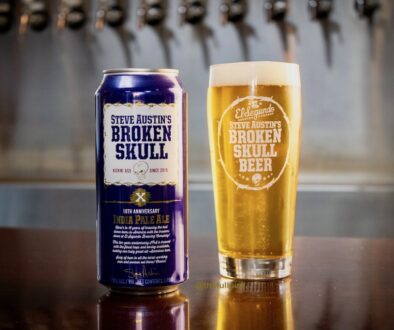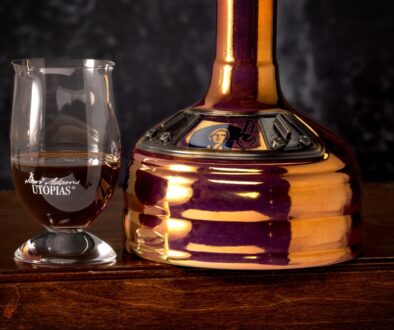Samuel Smith’s Winter Welcome Ale & Selection Box are here now
 Winter Welcome: The nineteenth edition of Samuel Smith’s Winter Welcome – the 2008 – 2009 bottling – is in great stores, bars and restaurants across America now.
Winter Welcome: The nineteenth edition of Samuel Smith’s Winter Welcome – the 2008 – 2009 bottling – is in great stores, bars and restaurants across America now.
The original imported winter ale, this hearty brew greets the change of the seasons each fall – it’s full-bodied, honey-amber colored, with great depth & richness; it gains impeccable character from fermentation in open-topped stone vessels known as “Yorkshire Squares.” (Yes, stone: locally-quarried slate!) The illustration on the label changes each year; the current 08 – 09 art is entitled “Fishing Buddies.”

It contains three “Victorian Pints” of benchmark ales – Samuel Smith’s Oatmeal Stout, Nut Brown Ale, and Old Brewery Pale Ale – as well as an authentic Smith pint glass, two brewery coasters, and a brochure that lists styles, brewery history, and food-pairing suggestions. The box was redesigned in 2008 in glossy black with metallic gold and now has die-cut openings to display the contents. Give the gift of flavor inspiration!
Remember to ask for the bottled beer list next time you are out at a pub or restaurant.

We just want to point out that every beer account should also have a selection of bottles, for several good reasons.
Variety: It’s quite easy to add a bottled beer to a bar’s offerings – the management doesn’t need to bump off a beer, as they must when adding a draft beer.
Opportunity: Customers benefit from the chance to try something different – maybe something very special that might not sell enough volume for a draft line. And the bar has the opportunity to sell something that not only makes the customer happier but yields a “vertical selling opportunity” – a higher selling price. A benefit to the consumer and to the bar owner? That’s a win-win.
Style: Sometimes a draft beer is just different from the bottled variety. It may be the conditioning (carbonation level) or it may actually be a different beer in composition. Plus, the carbonation level in a keg is affected by the draft system’s dispense pressure, especially as the level in the keg drops. Some styles – especially those with very high or very low carbonation – are more reliable in a bottle.
Drama & presentation: Many bottles of beer have labels that are information-packed, or that have really great art on them. Other bottles may be fine custom glass; they may be cork-finished; they may have a foil capsule; they might have a fun or quirky crown cap. In the case of a bottle, the customer has a personal interaction with the brewery’s effort, hard work and magic: by holding the bottle in their hand, they hold a little piece of the brewery.
Bottle-conditioning: A tapped cask-conditioned keg has quite a short shelf life, maybe only a day or two at peak. Bottle-conditioned beers – consumed at one sitting – have a very long shelf life. Some bottle-conditioned beers improve with age.
Portion control: Sold and counted in units, bottles are easier to control at the rare pub that has “inventory shrinkage” issues . . .
Offer the benchmarks: When customers want to compare a new beer to a classic, why not make it easy for them? We think every bar in America should probably have Samuel Smith’s Nut Brown Ale, Ayinger Celebrator Doppelbock, and Lindemans Framboise Lambic . . . but we may be biased. If you operate a pub or restaurant that doesn’t offer these beers, we have the solution for you: simply order in a case of each and make sure your server and bartenders know they are available. Then your customers will let you know what they think of these beers, via their big tips and big smiles.



